Salvia Microphylla: [Characteristics, Cultivation, Care and Disadvantages]
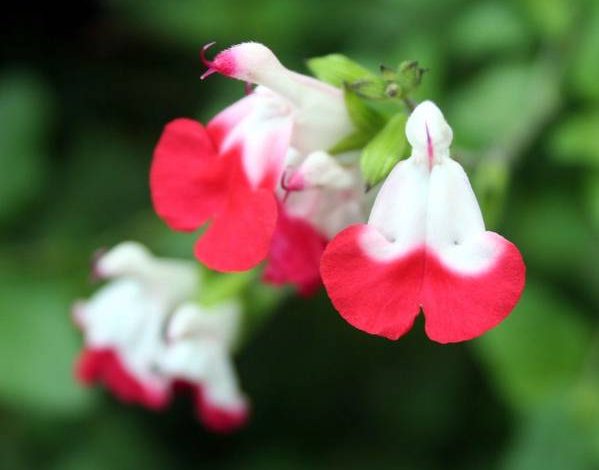
Important points when sowing a Salvia microphyll:
- When? Salvia microphylla should be sown in late summer or spring, using cuttings from the same plant.
- Where? In gardening, salvia microphylla is used for its flowering and leafiness in flowerbeds, gardens or to cover floors.
- How do we water? The salvia microphylla plant should receive moderate irrigation with a small amount of water, avoiding excesses that could cause fungal diseases to the plant.
- How often do we water? Irrigation should be increased a little in summer to make up for water losses due to excessive evapotranspiration.
- What care does it require? Salvia microphylla is a rustic type plant that requires little care for its cultivation, but appreciates support for its better development and growth.
- What pests and diseases affect you? Among the pests that affect salvia microphylla are: whitefly, aphids, snails and slugs.
What characteristics does salvia microphylla have?
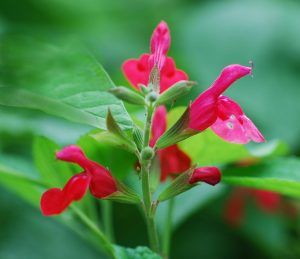 The salvia microphylla plant belongs to the lamiaceae family and is native to Mexico and the United States, especially Arizona.
The salvia microphylla plant belongs to the lamiaceae family and is native to Mexico and the United States, especially Arizona.
Salvia microphylla is the scientific name of the plant and is formed from two Latin words: salve “health”, and microphylla which means “small leaves”.
It is also known as mountain myrtle, micro sage, granadina sage and lollipops or mountain sage. It is a shrubby plant that is characterized by being highly branched, perennial, erect type and can reach a height of 1 meter.
The stem of Salvia microphylla is weak, forming a rounded mass and is semi-herbaceous. Its leaves, of an intense green colour, are entire, opposite, petiolate, have an oval to lanceolate shape with a jagged edge and give off a subtle mint scent.
It blooms between spring and summer. Its flowers appear in clusters, are tube-shaped and bilabiated. The flower of Salvia microphylla is a shade of fuchsia pink and a little stronger or carmine in the corolla, but it can also produce purple and orange flowers or combinations of them.
The stems, leaves and flowers of the plant contain a type of essential oil that comes from dimethyl terephthalate and has digestive and emmenagogue properties.
It is a variety that is very resistant to different atmospheric conditions thanks to its small toothed leaves and its woody, although thin, trunk, which provide it with a large amount of energy.
Sage in general is a plant known since ancient times and it is said that the Romans called it a sacred herb, for its healing powers.
When to sow salvia microphylla?
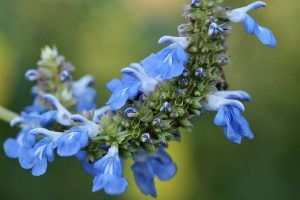 Salvia microphylla should be sown in late summer or spring, using cuttings from the same plant.
Salvia microphylla should be sown in late summer or spring, using cuttings from the same plant.
Previously, the cuttings must be subjected to a rooting treatment by leaving them in a container with water for a few days.
Where to plant salvia microphylla?
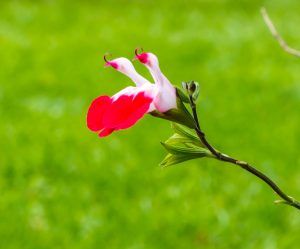 Salvia microphylla is cultivated as an ornamental and sometimes naturalized on banks, near inhabited areas.
Salvia microphylla is cultivated as an ornamental and sometimes naturalized on banks, near inhabited areas.
Within gardening, salvia microphylla is used for its flowering and leafiness, both in flowerbeds, gardens or to cover floors.
It is recommended to plant 3 units of salvia microphylla per square meter. In its natural habitat , Salvia microphylla is found in humid areas of meadows and mountain pastures.
How do we water salvia microphylla?
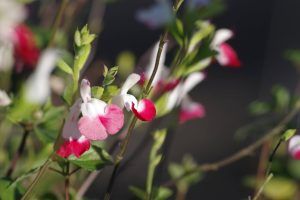 The salvia microphylla plant should receive moderate irrigation with a small amount of water, avoiding excesses that could cause fungal diseases to the plant.
The salvia microphylla plant should receive moderate irrigation with a small amount of water, avoiding excesses that could cause fungal diseases to the plant.
The objective of irrigation should be to maintain the adequate and constant level of humidity in the substrate, taking into account its texture, exposure to the sun, environmental humidity, temperature, etc.
It is a plant that does not tolerate waterlogging, so it is recommended to maintain a good drainage system for cultivation.
How often do we water salvia microphylla?
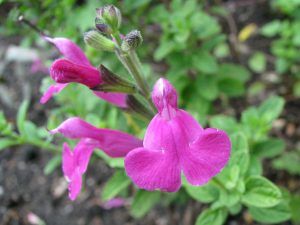 Irrigation should be increased a little in summer to make up for water losses due to excessive evapotranspiration.
Irrigation should be increased a little in summer to make up for water losses due to excessive evapotranspiration.
Salvia microphylla needs more water during the winter, when there is not an adequate level of rainfall or when the environmental humidity decreases extremely.
The ideal of irrigation would be to let the substrate dry to know that it is time to water again.
How to plant a salvia microphylla step by step?
Sowing of the microphylla can be done by cuttings and also by seed, in late spring.
- Take a cutting or choose salvia microphylla seeds that come from a robust, disease-free plant.
- Select a container or deep pot that has drainage capacity.
- Fill with a universal, fresh and clayey substrate.
- Sow the seeds or cuttings in rows and with a separation of 20 cm between them and about 70 cm from plant to plant. This form is used when planting at garden level or in a greenhouse.
- Water abundantly without flooding the plant.
- Locate the crop in a place with full sun or where it receives natural light.
What care does salvia microphylla need?
Salvia microphylla is a rustic type plant that requires little care for its cultivation, but appreciates support for its best development and growth:
- The soils, terrains or substrates necessary for salvia microphylla must be light, fertile and have good drainage.
- It will develop best in soils with a neutral acidic or alkaline pH.
- The location of the plant must be in full sun and it is resistant to long periods of drought.
- It is a cold -resistant species, being able to withstand frost with temperatures down to -15 degrees; but also intense heat and extreme environmental conditions.
- Maintenance pruning is recommended after frost passes in late winter.
What pests and diseases affect salvia microphylla?
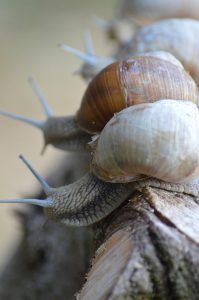 Among the pests that affect salvia microphylla are: whitefly, aphids, snails and slugs.
Among the pests that affect salvia microphylla are: whitefly, aphids, snails and slugs.
They are very small insects that can suck the sap from the stems, leaves and flowers of Salvia microphylla and they all have a great ability to reproduce and can even kill the plant.
To eliminate these insects, the application of water with a little biodegradable soap is recommended.
Although it is a resistant type plant, salvia microphylla can also be affected by fungal diseases such as rust and powdery mildew.
Rust is a foliar disease that affects crops in general and has become one of the most devastating in coffee and cereal crops.
It is characterized by the appearance of orange-brown spots that advance between the nerves of the leaves towards the tips and cause necrosis in the leaves.
Rust is combated with special chemical fungicides for this type of plant, and above all with the prevention and care of salvia microphylla. On the other hand, powdery mildew, also known as ash, white mold, is a fungus that is part of the Erysiphaceae family.
It feeds on salvia microphylla and does not normally cause the death of the plant, but instead weakens it by causing necrosis damage to the leaves and immaturity of the fruit.
Bibliographic references
- Salvia microphylla Kunth, GB Hinton – 2010 – siba.ibiologia.unam.mx
- Palynological study of the genus Salvia L. in the Iberian Peninsula, IF González, MAM Mosquero, JEP Díaz – Lagascalia, 2000 – dialnet.unirioja.es
- Evaluation of anti-inflammatory activity and chemometric studies of Salvia species from Xalapa, Veracruz and surrounding municipalities, O Guzmán Gómez – 2014 – cdigital.uv.mx
- SALVIA (LAMIACEAE) SPECIES FOR ARGENTINA, N O’Leary, P Moroni – Darwiniana, 2016 – JSTOR
- Lamiaceae from Mexico, M Martínez-Gordillo, B Bedolla-García… – Botanical…, 2017 – scielo.org.mx
- Diversity and distribution of the genus Salvia (Lamiaceae) in Michoacán, México, G Cornejo-Tenorio, G Ibarra-Manríquez – Revista mexicana de…, 2011 – scielo.org.mx
- Ethnobotanical knowledge on the use of medicinal plants in the Sierra Negra of Puebla, Mexico, G Velázquez-Vázquez… – … and the Caribbean of …, 2019 – blacpma.ms-editions.cl
- LIST OF MEDICINAL PLANTS, MEDICINAL LDEP – tlahui.com


![Photo of Hyacinth Care: [Soil, Humidity, Pruning and Problems]](https://www.complete-gardening.com/wp-content/uploads/2022/08/hyacinth-care-soil-humidity-pruning-and-problems-390x220.jpg)
![Photo of Prune Citrus: [Importance, Season, Tools, Considerations and Steps]](https://www.complete-gardening.com/wp-content/uploads/2022/08/prune-citrus-importance-season-tools-considerations-and-steps-390x220.jpg)
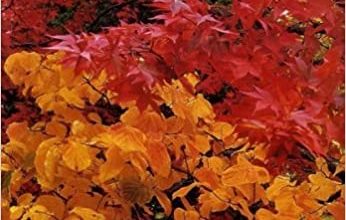
![Photo of How to Make Homemade Organic Compost: [Types and Forms]](https://www.complete-gardening.com/wp-content/uploads/2022/08/how-to-make-homemade-organic-compost-types-and-forms-390x220.jpg)